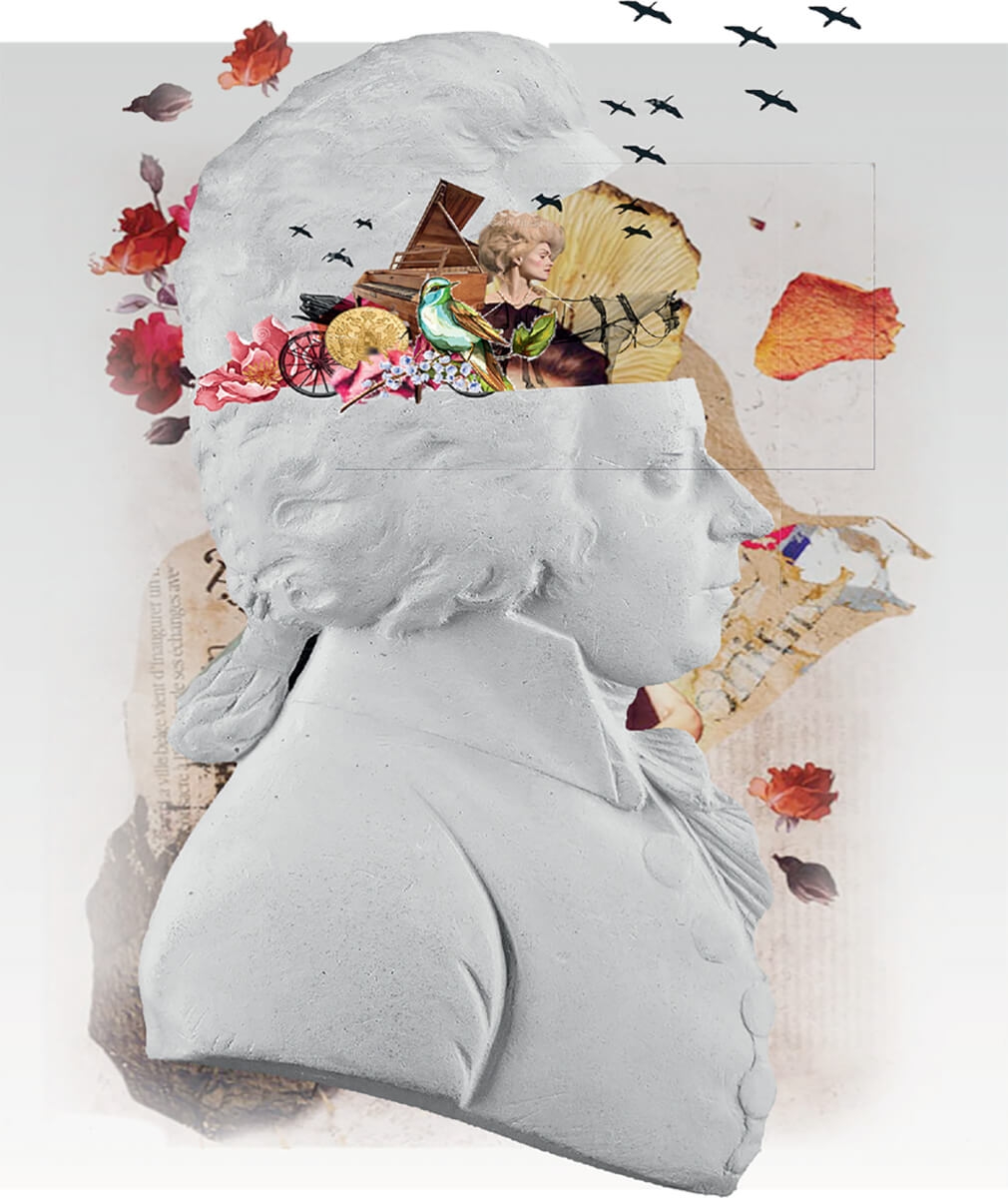
History
A Historical Survey
The Cathedral Music Association and Mozarteum was founded on 22 April 1841 on the initiative of a group of committed citizens of Salzburg. Besides organising concerts the association promoted musical education. In 1844, Mozart’s son, Franz Xaver Mozart, authorized that the manuscripts and fragments in his estate, the clavichord and the entire library should be bequeathed to the Mozarteum.
The centenary of Mozart’s birth was celebrated in 1856. Many artists and singing societies took part and a first “Mozart Exhibition” took place in Mozart’s Birthplace, Getreidegasse No. 9.
The Salzburg Mozarteum Foundation came into being on 16 October 1870. Today’s aims – to foster Mozart’s heritage and make it accessible in three spheres: concerts, research and museums – is reflected already in the Foundation’s statutes. These already established the aim of building a Mozart House for concert performances as well as for a Mozart library and Mozart archives.
In 1875 the Salzburg Mozarteum Foundation took part in a first major academic project: the first critically assessed complete edition of the works of Mozart was published between the years 1876 and 1907 by Breitkopf & Härtel in Leipzig.
From 17 to 20 July 1877 the Mozarteum Foundation organized a First Salzburg Music Festival which attracted many guests from home and abroad to Salzburg.
In 1880 the Salzburg Mozart Foundation succeeded in setting up a Mozart Museum on the third floor of Mozart’s Birthplace.
On 16 October 1870, on the occasion of the first Mozart Conference, the Salzburg Mozarteum Foundation was separated from the Cathedral Music Association and Mozarteum. This gave rise to the three Salzburg institutions which today still bear the name Mozarteum: the Salzburg Mozarteum Foundation, the Academy of Music which in 1998 was awarded university status and is now known as the Universität Mozarteum Salzburg, and the Salzburg Mozarteum Orchestra.
In 1909 a competition was held for the building of a “Mozart House”, which was won by the architect Richard Berndl from Munich. The ceremonial laying of the foundation stone in the garden of the former Lasser Villa took place on 6 August 1910. The building was completed in 1914; besides the Mozart Library and several administrative offices it houses two concert halls, the Great Hall and the Wiener Saal.
During the First World War the Activities of the International Mozarteum Foundation were paralysed. Nevertheless, in 1917, thanks mainly to the efforts of the great patron and singer Lilli Lehman, it was able to buy the building of Mozart’s Birthplace in its entirety.
In 1931 the Central Institute for Mozart Research (known since 2003 as the Academy of Mozart Research) was founded and given the task of “recording and collecting all results and setbacks in Mozart research on an academic basis.”
On 16 October 1944, two-thirds of the Mozart Residence, partially rented by the Foundation since 1939, was destroyed. In the 1990s, the International Mozarteum Foundation was able to buy the office building adjoining the part of the “Dancing Master’s House” spared by bombs, demolish it and reconstruct the Mozart Residence according to old plans. In January 1996 a new, modern museum was ceremonially opened in the reconstructed Mozart Residence and in the restored “Dancing Master’s Hall”. In the vaults valuable Mozart autographs are stored according to the most up-to-date security and conservation criteria.
Besides academic and museum duties, the International Mozarteum Foundation annually organises various concert cycles: in 1956 the Mozart Week was founded. It takes place every year around the date of Mozart’s birth at the end of January, lasts about ten days and extends into February. In Mozart Year 2006 the Festival Dialoge was inaugurated and primarily addresses audiences who are open for a controversial, contemporary analysis of new and classical music. This festival takes place annually around the anniversary of Mozart’s death on December 5th. During the year, the Foundation also organises a season of concerts in the Great Hall and in the Viennese Saal, focusing mainly on chamber music.